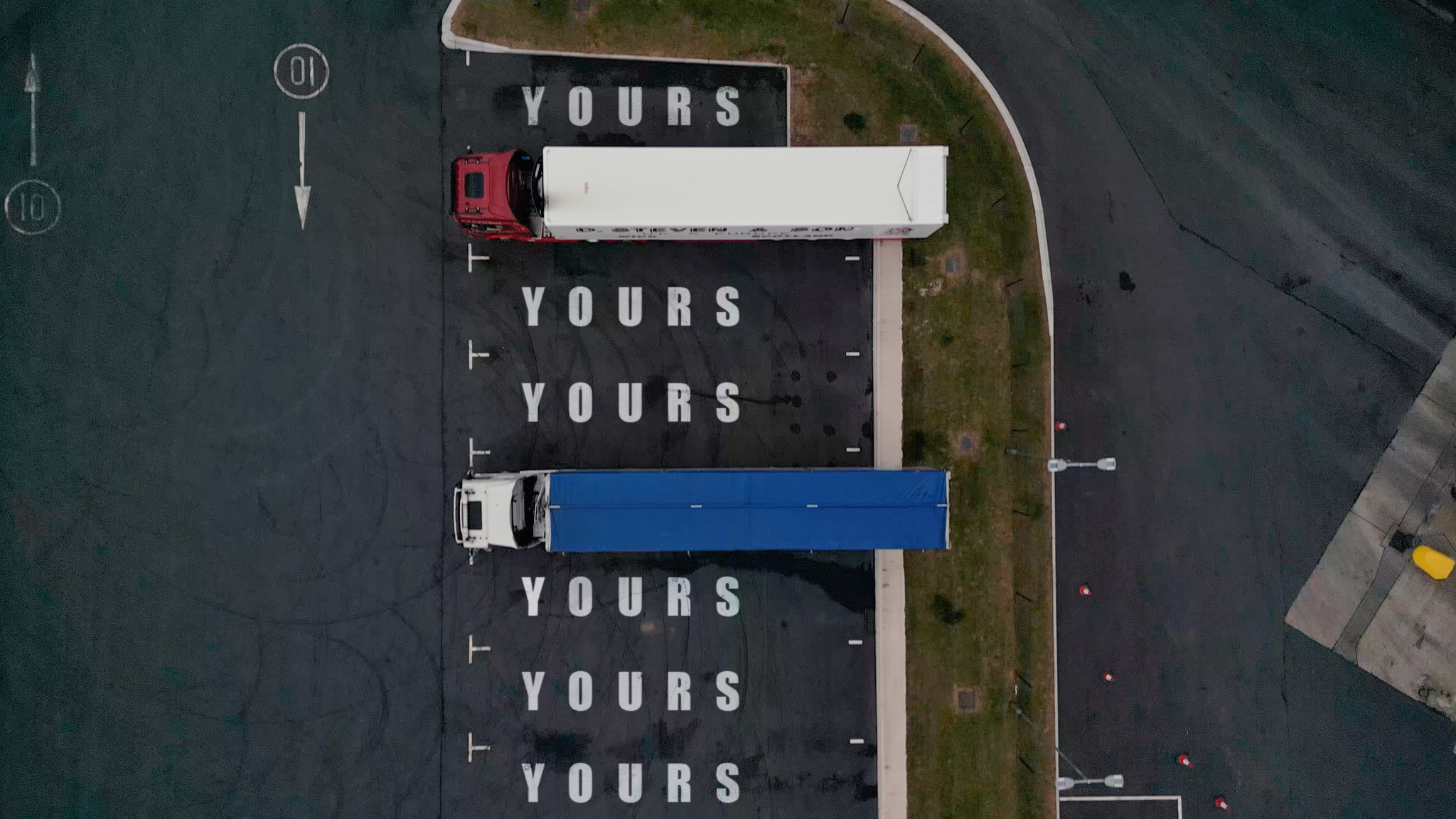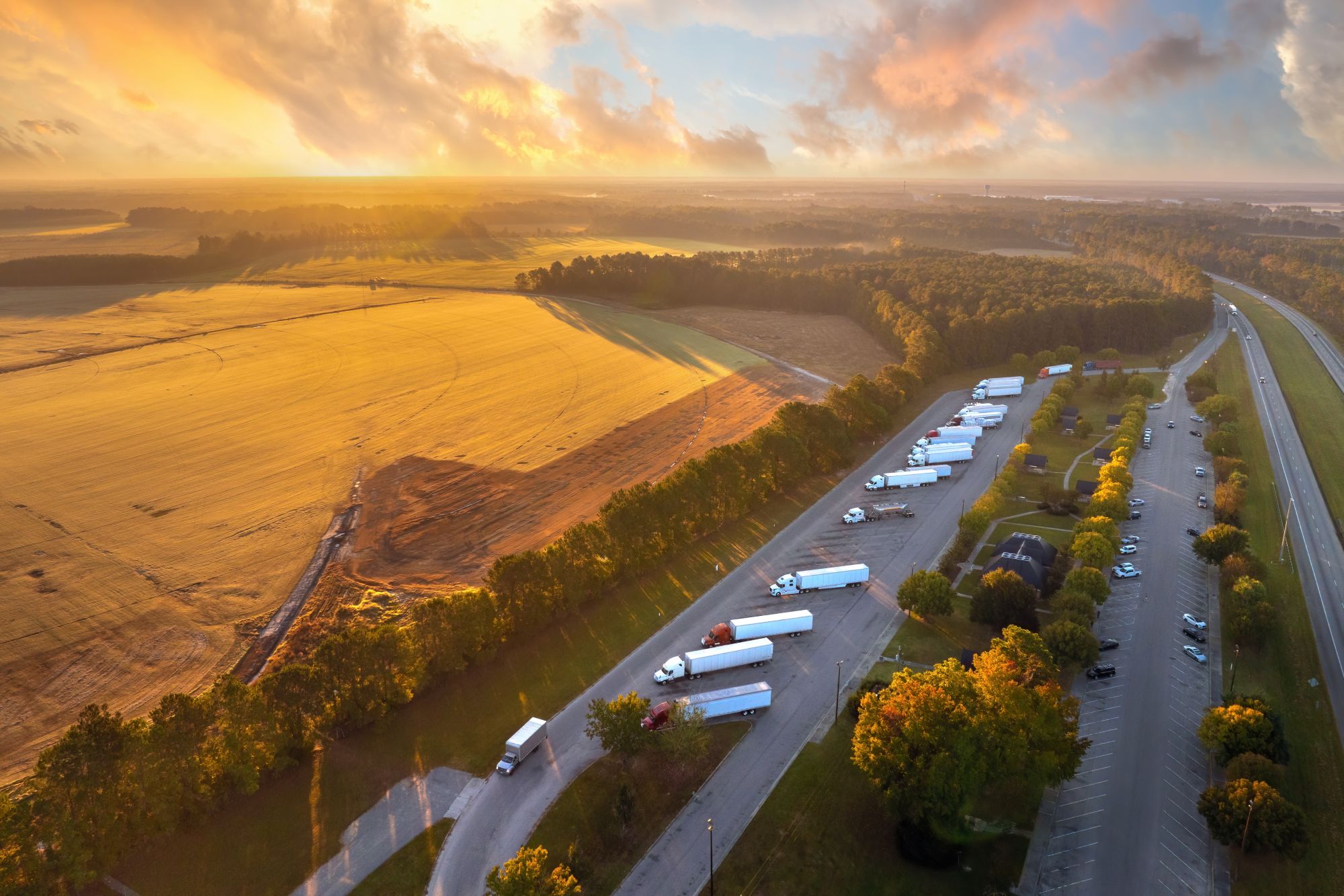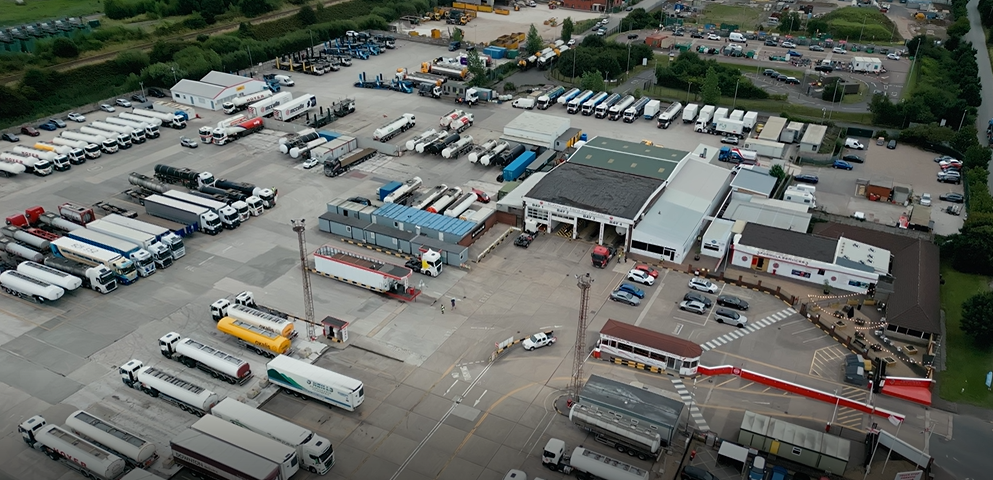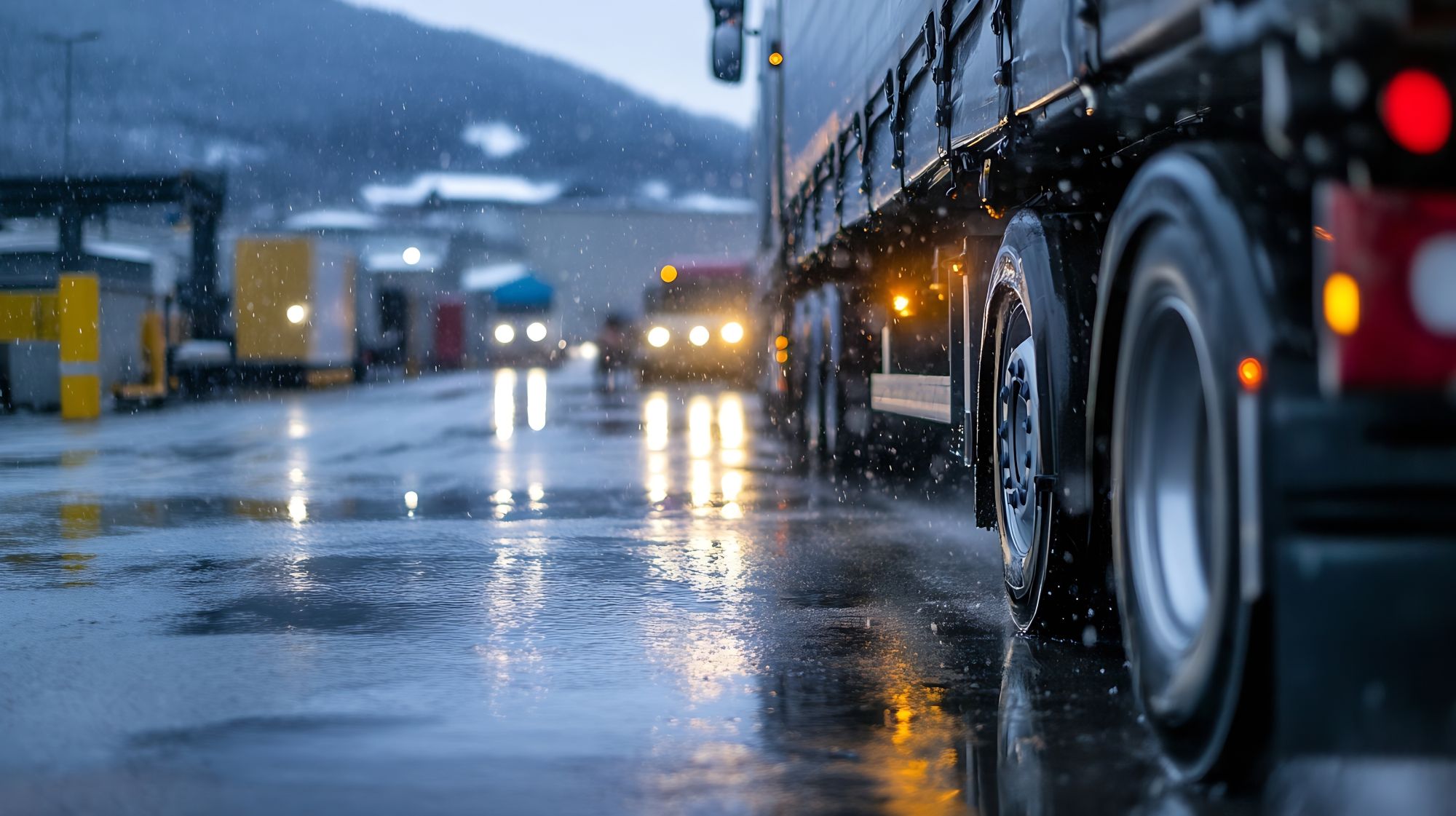
Miranda Blake
Défis et solutions dans la gestion moderne des transports
Créée: 16/12/2024
•
Mise à jour : 16/12/2024
La gestion moderne des transports est une approche stratégique de la planification, de l'organisation et du contrôle de l'efficacité et de l'efficience du transport des marchandises et des matériaux, de l'origine à la destination. Il s'agit de tirer parti de la technologie et des données pour optimiser les processus de transport, réduire les coûts et améliorer la satisfaction des clients.
Dans ce blog, nous explorons les principaux défis et solutions liés à cette question.
Principaux défis
L'un des problèmes les plus urgents auxquels sont confrontées les flottes est la gestion des dépenses en carburant. Celles-ci représentent une part importante des dépenses opérationnelles et leur volatilité peut avoir des conséquences désastreuses sur les processus budgétaires et la rentabilité globale. La nature imprévisible des prix du carburant crée un effet d'entraînement tout au long de la chaîne d'approvisionnement, obligeant les entreprises à prendre des décisions difficiles en matière d'absorption des coûts ou d'augmentation des prix, ce qui risque d'avoir un impact sur leur compétitivité. Toutefois, les entreprises prévoyantes adoptent des stratégies pour atténuer les risques associés :
● Conclure des contrats de couverture des carburants afin de bloquer les prix pour une période déterminée, stabilisant ainsi les dépenses.
● Investir dans des véhicules modernes et économes en carburant pour réduire la consommation et diminuer les coûts globaux.
● Explorer les sources de carburant alternatives, telles que le biodiesel ou le gaz naturel comprimé, afin de servir de tampon contre les fluctuations des prix des carburants traditionnels.
L'une des solutions - [SNAP Fuel] (https://snapacc.com/snap-fuel/) - permet une gestion transparente du carburant :
● Les opérateurs de flotte peuvent accéder à des rapports détaillés sur les dépenses, ce qui assure la transparence des coûts et les aide à identifier les tendances et les domaines à améliorer.
● En s'associant à Certas Energy, les utilisateurs peuvent accéder à des tarifs réduits sur le carburant, ce qui permet de réduire davantage les dépenses.
Embouteillages
Un autre problème est celui de la circulation. À mesure que les populations urbaines augmentent, la pression sur les infrastructures existantes s'intensifie, ce qui entraîne des problèmes tout au long de la chaîne logistique. Les retards deviennent monnaie courante, la consommation de carburant grimpe en flèche et les coûts d'exploitation explosent, tandis que la satisfaction des clients chute en raison de l'allongement des délais de livraison.
Il existe plusieurs tactiques pour contrer les effets négatifs de cette situation :
● L'utilisation d'un logiciel avancé d'optimisation des itinéraires peut aider à identifier les chemins les plus efficaces, réduisant ainsi le temps de déplacement et la consommation de carburant.
● L'intégration de données de trafic en temps réel dans les opérations peut permettre des ajustements dynamiques des itinéraires en fonction des conditions actuelles.
● L'élaboration de plans logistiques urbains sur mesure peut permettre aux entreprises de relever les défis propres à la ville, comme les zones d'accès restreint et les heures de pointe du trafic.
Perturbations de la chaîne d'approvisionnement
Qu'il s'agisse de catastrophes naturelles, d'événements géopolitiques ou de pénuries de main-d'œuvre, les perturbations sont un autre problème auquel les flottes sont confrontées, entraînant des retards, une augmentation des coûts et une diminution des niveaux de service, ce qui remet en cause la résilience des systèmes de gestion des transports.
Pour faire face à ces interruptions, les organisations peuvent adopter plusieurs stratégies :
● Diversification: L'approvisionnement en matériaux et services auprès de plusieurs fournisseurs peut réduire la dépendance à l'égard d'un seul d'entre eux et atténuer les risques.
● Évaluations des risques: La réalisation régulière de ces évaluations peut contribuer à identifier les vulnérabilités au sein de la chaîne d'approvisionnement et à soutenir la planification des mesures d'urgence.
● Surveillance en direct: La mise en place de technologies offrant une visibilité en temps réel sur la chaîne d'approvisionnement peut améliorer la réactivité et accélérer la prise de décision.
[Conducteur utilisant la technologie] (https://prodsnapstorage.blob.core.windows.net/public-news/2efaac06-0c59-493a-bd63-032480ada402-Driver%20using%20technology.jpg)
Solutions innovantes
Au fur et à mesure que les technologies évoluent et s'intègrent, elles promettent de remodeler l'avenir de la gestion des transports, en s'attaquant à des problèmes de longue date et en ouvrant de nouvelles possibilités de croissance et d'innovation.
● Télématique: Les systèmes de suivi des véhicules fournissent des données en temps réel sur la localisation, l'optimisation des itinéraires et le comportement des conducteurs, ce qui facilite des jugements plus éclairés.
● Appareils IoT: Ils peuvent surveiller la santé du véhicule, la consommation de carburant et l'état de la cargaison, garantissant ainsi des performances et une sécurité optimales.
● AI et apprentissage automatique: Grâce à eux, vous pouvez activer l'analyse prédictive et la prévision de la demande, en améliorant l'optimisation des itinéraires et la gestion des stocks.
● Blockchain: La mise en œuvre de cette technologie peut améliorer la transparence, la sécurité et la traçabilité de la chaîne d'approvisionnement, favorisant la confiance entre les parties prenantes.
Rétention et formation des conducteurs
La pénurie de conducteurs est un autre défi de la gestion des transports, que le ministère des transports tente de résoudre en lançant une consultation sur les moyens d'y remédier. Nous avons invité les camionneurs à exprimer leur opinion sur la proposition sur la [page Facebook du SNAP] (https://www.facebook.com/snapaccount). Si beaucoup n'ont pas commenté le projet, 72,5 % ont contesté l'expression "pénurie de conducteurs", la qualifiant d'alarmiste. Au lieu de cela, ils [ont énuméré plusieurs raisons pour lesquelles les camionneurs expérimentés quittent le secteur] (https://snapacc.com/newsroom/hgv-drivers-challenge-the-term-driver-shortage/).
C'est pourquoi il est toujours aussi important d'attirer et de retenir des conducteurs qualifiés. Le gouvernement [a introduit plusieurs mesures] (https://snapacc.com/newsroom/addressing-the-hgv-driver-shortage-in-the-uk-in-20242025/), mais les gestionnaires de flotte et les camionneurs peuvent prendre des mesures eux-mêmes :
● Rémunération et avantages compétitifs: Offrir des packages attractifs peut contribuer à attirer les meilleurs talents sur un marché de l'emploi concurrentiel.
● Régimes de travail flexibles: Offrir ces régimes peut améliorer la satisfaction au travail et réduire les taux de rotation.
● Formation avancée et développement des compétences: Investir dans des programmes continus peut doter les conducteurs des capacités nécessaires pour exceller dans leur rôle et s'adapter aux nouvelles technologies.
Un autre moyen de retenir les chauffeurs est de leur faciliter la tâche, notamment en leur permettant de payer le stationnement et le lavage. Heureusement, il y a SNAP.
Obtenir le soutien de SNAP
Pour en savoir plus sur [nos services] (https://snapacc.com/) et sur la manière dont ils peuvent contribuer à la gestion des transports, contactez-nous en appelant le +44 (0)1603 777242.



